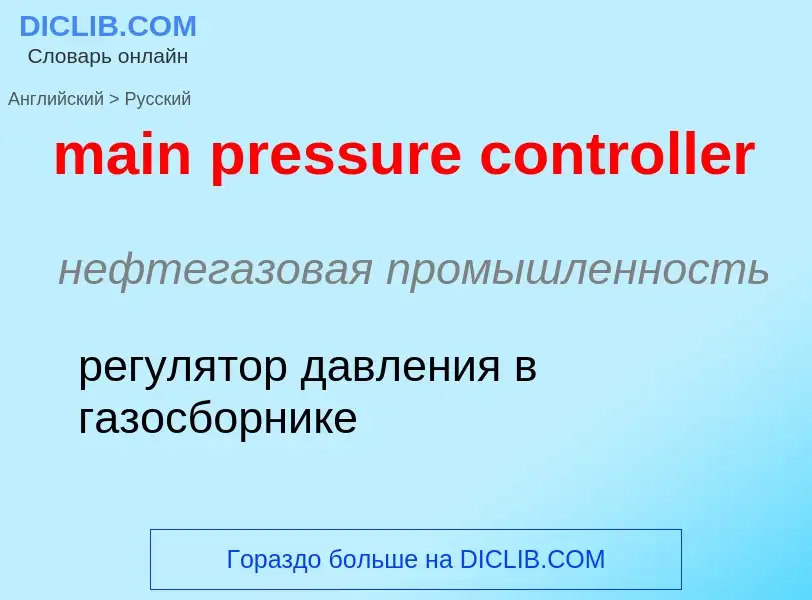Vertaling en analyse van woorden door kunstmatige intelligentie ChatGPT
Op deze pagina kunt u een gedetailleerde analyse krijgen van een woord of zin, geproduceerd met behulp van de beste kunstmatige intelligentietechnologie tot nu toe:
- hoe het woord wordt gebruikt
- gebruiksfrequentie
- het wordt vaker gebruikt in mondelinge of schriftelijke toespraken
- opties voor woordvertaling
- Gebruiksvoorbeelden (meerdere zinnen met vertaling)
- etymologie
main pressure controller - vertaling naar russisch
нефтегазовая промышленность
регулятор давления в газосборнике
общая лексика
дисковый контроллер, контроллер диска
плата расширения и/или микросхема, обеспечивающая взаимодействие процессора с дисковым накопителем
Definitie
Wikipedia

A pressure vessel is a container designed to hold gases or liquids at a pressure substantially different from the ambient pressure.
Construction methods and materials may be chosen to suit the pressure application, and will depend on the size of the vessel, the contents, working pressure, mass constraints, and the number of items required.
Pressure vessels can be dangerous, and fatal accidents have occurred in the history of their development and operation. Consequently, pressure vessel design, manufacture, and operation are regulated by engineering authorities backed by legislation. For these reasons, the definition of a pressure vessel varies from country to country.
Design involves parameters such as maximum safe operating pressure and temperature, safety factor, corrosion allowance and minimum design temperature (for brittle fracture). Construction is tested using nondestructive testing, such as ultrasonic testing, radiography, and pressure tests. Hydrostatic pressure tests usually use water, but pneumatic tests use air or another gas. Hydrostatic testing is preferred, because it is a safer method, as much less energy is released if a fracture occurs during the test (water does not greatly increase its volume when rapid depressurization occurs, unlike gases, which expand explosively). Mass or batch production products will often have a representative sample tested to destruction in controlled conditions for quality assurance. Pressure relief devices may be fitted if the overall safety of the system is sufficiently enhanced.
In most countries, vessels over a certain size and pressure must be built to a formal code. In the United States that code is the ASME Boiler and Pressure Vessel Code (BPVC). In Europe the code is the Pressure Equipment Directive. Information on this page is mostly valid in ASME only. These vessels also require an authorized inspector to sign off on every new vessel constructed and each vessel has a nameplate with pertinent information about the vessel, such as maximum allowable working pressure, maximum temperature, minimum design metal temperature, what company manufactured it, the date, its registration number (through the National Board), and American Society of Mechanical Engineers's official stamp for pressure vessels (U-stamp). The nameplate makes the vessel traceable and officially an ASME Code vessel.
A special application is pressure vessels for human occupancy, for which more stringent safety rules apply.










![A few pressure tanks, here used to hold [[propane]]. A few pressure tanks, here used to hold [[propane]].](https://commons.wikimedia.org/wiki/Special:FilePath/Propane tanks large.jpg?width=200)
![kier]]. kier]].](https://commons.wikimedia.org/wiki/Special:FilePath/Bergisch Gladbach - Papiermühle Alte Dombach 07 ies.jpg?width=200)
















![Early PID theory was developed by observing the actions of [[helmsmen]] in keeping a vessel on course in the face of varying influences such as wind and sea state. Early PID theory was developed by observing the actions of [[helmsmen]] in keeping a vessel on course in the face of varying influences such as wind and sea state.](https://commons.wikimedia.org/wiki/Special:FilePath/Scross helmsman.jpg?width=200)

